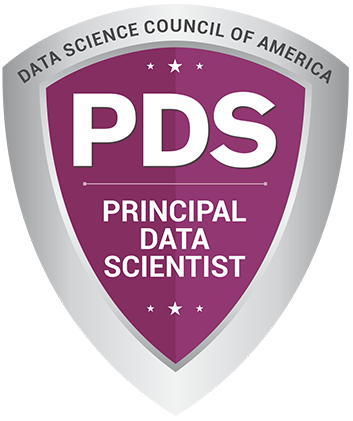
About the Author
In today’s dynamic business landscape, capital projects—large-scale investments such as infrastructure development, technology deployment, and mergers and acquisitions—pose significant challenges due to their inherent complexity, uncertainty, and risk. Machine Learning (ML), a subset of Artificial Intelligence (AI), provides innovative approaches to enhance decision-making processes, enabling organizations to extract meaningful insights from data, forecast outcomes, and automate repetitive tasks.
This article delves into how ML can support strategic decision-making in capital projects, focusing on practical methodologies, use cases, and actionable insights. Drawing upon real-world examples, we examine the development of machine learning interfaces and their role in effective communication with stakeholders.
The Role of Machine Learning in Capital Projects
Capital projects typically involve extensive data, multiple stakeholders, and substantial financial investments. Traditional methods often rely on historical data analysis and intuition, which may fail to fully capture the dynamic nature of modern projects.
Core Benefits of Machine Learning in Capital Projects:
- Processing Large Data Sets: Machine learning algorithms can process and analyze both structured and unstructured data, uncovering patterns and relationships.
- Predictive Modeling: Techniques like regression and classification predict timelines, costs, and risks.
- Process Automation: Routine tasks, such as report generation, can be automated to free up resources for strategic decision-making.
- Data-Driven Insights: Data visualization tools highlight actionable trends, supporting informed decisions.
Developing Machine Learning Interfaces for Business Storytelling
Effective use of ML in decision-making requires translating complex analytics into accessible insights for non-technical stakeholders. This is achieved through intuitive interfaces and data storytelling.
Key Features of ML Interfaces:
- 1.Interactive Dashboards: Tools like Tableau allow users to interact with data, exploring trends and patterns.
- 2.Visualization Techniques: Use of heat maps, scatter plots, and trend lines to represent data visually.
- 3.Contextual Narratives: Storytelling components explain the implications of data for project outcomes.
- 4.Real-Time Data Integration: Up-to-date insights enable proactive decision-making.
- 5.Customization: Interfaces tailored to different user roles foster relevance and engagement.
Case Study: Leveraging Machine Learning to Enhance Portfolio Growth
Objective: To design a machine learning framework for identifying investment opportunities by analyzing customer behavior patterns and market trends.
Approach:
1. Data Pre-processing
The first step involves preparing and refining data to ensure quality and reliability for machine learning models. Key steps include:
-
Data Consolidation:
- Gather data from multiple sources, such as historical investment records, market trends, customer demographics, and risk profiles.
- Combine structured data (e.g., transaction logs) with unstructured data (e.g., customer reviews, social media sentiment).
-
Data Cleaning:
- Address missing values through techniques like mean/mode imputation for numerical data and K-Nearest Neighbors (KNN) imputation for categorical data.
- Remove anomalies using algorithms like Isolation Forest or DBSCAN (Density-Based Spatial Clustering of Applications with Noise).
-
Feature Engineering:
- Normalize numerical variables to a common scale using Min-Max Scaling or Standardization.
- Create derived features, such as customer lifetime value, churn probability, or seasonal trends, to improve model accuracy.
2. Model Development
The modeling phase transforms the processed data into actionable insights through predictive and descriptive machine learning techniques.
-
Predictive Modeling:
- Supervised learning algorithms, such as Random Forests, Gradient Boosting Machines (GBM), or LightGBM, are employed to predict customer investment behaviors.
- Hyperparameter tuning (e.g., grid search or Bayesian optimization) ensures optimal model performance.
- Evaluate performance using metrics like Precision, Recall, F1-Score, and Area Under the Receiver Operating Characteristic Curve (AUC-ROC).
-
Customer Segmentation:
- Unsupervised clustering techniques, such as K-Means or Hierarchical Clustering, group customers based on shared characteristics (e.g., risk appetite, investment frequency).
- Dimensionality reduction techniques like Principal Component Analysis (PCA) simplify high-dimensional datasets to improve clustering results.
-
Model Validation:
- Use cross-validation to assess the robustness of the model.
- Apply confusion matrices and lift curves to analyze the practical impact of predictions.
3. User Engagement and Insights Delivery
To ensure insights are accessible to stakeholders, it is crucial to present them in an intuitive and actionable format.
-
Interactive Dashboards:
- Use tools like Tableau, Power BI, or Python libraries (e.g., Plotly, Dash) to create dashboards with dynamic filters and drill-down capabilities.
- Visualize patterns with heatmaps, bar charts, scatter plots, and trend lines to highlight key findings.
-
Explanatory Tooltips:
- Add contextual explanations and tooltips to each visualization to help non-technical users interpret data insights effectively.
-
Stakeholder Workshops:
- Organize training sessions and workshops to demonstrate the practical application of model outputs.
- Use scenario-based examples to show how different investment strategies could impact portfolio growth.
Leveraging Machine Learning for Risk Management
Effective risk management is a cornerstone of successful capital projects, given the potential for financial, operational, and compliance risks. Machine learning provides a robust framework to identify and address risks early, enabling proactive mitigation strategies.
Case Study: Enhancing Fraud Detection in Financial Transactions
Objective: To improve fraud detection accuracy in financial transactions by addressing challenges such as data imbalance and minimizing false positives, thereby safeguarding organizational assets and customer trust.
Challenges:
-
1.Severe Class Imbalance:
- Fraudulent transactions often constitute a very small percentage of total transactions (e.g., 1.6% fraudulent vs. 98.4% legitimate), making it difficult for traditional models to accurately identify anomalies.
- Balancing the dataset is critical to avoid overfitting towards the majority class (legitimate transactions).
-
2.False Positives:
- Reducing false positives is essential to maintain operational efficiency and avoid unnecessary investigation costs while ensuring that fraudulent cases are not missed.
Solution Development:
1. Data Pre-processing
A well-processed dataset ensures the reliability and robustness of the ML models.
-
Missing Value Imputation:
- Address incomplete transaction records using techniques like K-Nearest Neighbors (KNN) or median imputation.
- This ensures data consistency without introducing bias.
-
Anomaly Detection:
- Use Isolation Forest or One-Class SVM (Support Vector Machines) to identify outliers in transaction patterns.
- Anomalies are flagged for deeper analysis to improve fraud detection sensitivity.
2. Feature Engineering
Creating meaningful features is crucial for capturing the nuances of fraudulent behaviors.
-
Time-Based Features:
- Extract temporal variables such as transaction time, frequency, and periodicity to identify suspicious patterns (e.g., unusually frequent transactions late at night).
-
Interaction Terms:
- Combine features (e.g., transaction amount × location) to detect non-linear relationships indicative of fraud.
-
Behavioral Patterns:
- Develop features capturing deviations from normal customer behavior, such as unusual spending patterns or changes in geolocation.
3. Model Development
Addressing class imbalance and improving model accuracy requires sophisticated machine learning techniques.
-
Balancing the Dataset:
- Apply techniques such as Synthetic Minority Oversampling Technique (SMOTE) or Adaptive Synthetic Sampling (ADASYN) to oversample the minority class.
- Use cost-sensitive learning to penalize misclassifications of fraudulent transactions.
-
Algorithm Selection:
- Implement ensemble methods like XGBoost, Random Forest, or LightGBM due to their ability to handle imbalanced datasets effectively.
- Optimize model parameters using techniques like grid search or Bayesian optimization to maximize performance.
-
Performance Metrics:
-
Evaluate models using metrics sensitive to imbalanced data, such as:
- F1-Score: Balances precision and recall for fraud detection.
- Precision-Recall AUC: Measures trade-offs between identifying fraud and avoiding false positives.
-
Evaluate models using metrics sensitive to imbalanced data, such as:
The integration of advanced ML techniques led to significant improvements in fraud detection:
- Accuracy Improvement: A 15% increase in fraud detection accuracy.
- Enhanced Recall: Increased detection rate of fraudulent transactions by 50%, reducing financial losses.
- Operational Savings: Reduced false positives, enabling fraud investigation teams to focus on genuine threats.
- Financial Impact: Safeguarded millions by preventing fraudulent activities.
Takeaways –
- Class Imbalance Strategies: Effective handling of imbalanced datasets is critical for fraud detection.
- Feature Engineering Importance: Time-based and interaction features significantly improve fraud identification.
- Evaluation Metrics: Use specialized metrics like Precision-Recall AUC to assess the performance of models on imbalanced data.
Best Practices for Developing ML Interfaces for Business Storytelling
Here are some best practices for developing effective ML interfaces that facilitate strategic decision-making:
-
1.Understand the Audience
- Tailor the interface to the users' technical proficiency and business needs.
- Use language and visuals that resonate with stakeholders.
-
2.Simplify Complexity
- Present complex analytics in an understandable format.
- Use storytelling to connect data insights with business objectives.
-
3.Ensure Data Accuracy and Integrity
- Implement robust data cleaning and validation processes.
- Regularly update models with new data to maintain relevance.
-
4.Promote Interactivity
- Allow users to explore data through filters, drill-downs, and what-if scenarios.
- Enable customization to focus on specific areas of interest.
-
5.Focus on User Experience
- Design intuitive interfaces with clear navigation.
- Use consistent design elements and branding.
-
6.Facilitate Collaboration
- Integrate features that allow for sharing insights and collaborating across teams.
- Encourage feedback to improve the tools continually.
Future Trends in ML for Capital Projects
The integration of machine learning in capital projects is evolving, with emerging trends set to further enhance strategic decision-making:
1. Explainable AI (XAI)
- Importance: As ML models become more complex, understanding how they make decisions is crucial for trust and compliance.
- Application: Tools like LIME (Local Interpretable Model-agnostic Explanations) and SHAP (Shapley Additive Explanation) help interpret model outputs.
2. Automated Machine Learning (AutoML)
- Importance: Simplifies the ML development process, making it accessible to non-experts.
- Application: Platforms like DataRobot and H2O.ai automate feature selection, model training, and tuning.
3. Edge Computing
- Importance: Processes data closer to its source, reducing latency and bandwidth usage.
- Application: Useful in projects where real-time data processing is critical, such as IoT devices in construction sites.
4. Integration with Blockchain
- Importance: Enhances data security and transparency.
- Application: Securing transaction data and audit trails in capital projects.
Conсlusion
Leveraging machine learning for strategic decision-making in capital projects offers significant advantages. By developing user-friendly interfaces and employing data storytelling techniques, organizations can translate complex analytical insights into actionable business strategies.
Key takeaways include:
- Enhanced Decision-Making: ML provides predictive insights that inform strategic choices.
- Improved Efficiency: Automation and optimized processes save time and resources.
- Risk Mitigation: Predictive models help identify and address potential risks proactively.
- Stakeholder Engagement: Effective interfaces and storytelling foster user adoption and collaboration.
As machine learning technologies continue to advance, their role in capital projects will become even more integral. Organizations that embrace these tools will be better positioned to navigate the complexities of large-scale investments and achieve their strategic objectives.

































